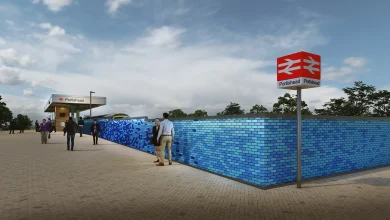Sunken Silk Road city emerges from depths of 25-million-year-old lake

Archaeologists have uncovered a massive lost city from the legendary Silk Road, swallowed by the world’s 8th deepest lake following a devastating earthquake.
A specialized team from the Russian Academy of Sciences plunged into the icy depths of Issyk-Kul Lake—a 25-million-year-old alpine giant in Kyrgyzstan’s western Tianshan Mountains—to solve the mystery this ancient body of water has been concealing.
The researchers found a treasure trove: the remnants of a major mountain city, likened to a sunken Atlantis by the New York Post. Far from myth, this find yielded concrete evidence of a secret settlement, a vital stop for travelers and traders along the Silk Road, which startlingly included a vast Muslim necropolis.
The underwater archaeologists methodically explored the site in four distinct layers, laying crucial groundwork for future research to fully document and preserve the staggering legacy hidden within Issyk-Kul, one of the world’s most ancient lakes.
Submerged city of the Silk Road
This historic site, officially named the Toru-Aygyr complex, lies just off the northwestern shore of Lake Issyk-Kul, where the Russian Academy of Sciences team dove a surprisingly shallow 3 to 13 feet, according to The New York Post.
Despite the short distance from land, the dive was a journey through time, allowing explorers to meticulously peel back the lake’s layers and uncover the spectacular remnants of an ancient urban center on the legendary Silk Road, the primary artery connecting the known world from East to West.
As reported by Heritage Daily, the team’s first zone yielded numerous fired-brick structures, including one containing a millstone from a medieval grain mill. The New York Post confirmed that although the stone structures had collapsed, wooden beams remained remarkably preserved.
Delving deeper, researchers identified what they believe was a major public building—possibly a mosque, bathhouse, or school known as a madrasa. Furthermore, the sprawling remains included a huge 13th-century Muslim necropolis attached to the city, complete with mudbrick structures and other unidentified rectangular shapes, The New York Post noted. Remarkably, preserved skeletons were found face down, oriented north toward the qibla in line with traditional Muslim burial rites.
The city collapsed after earthquake
Valery Kolchenko, the lead researcher from the National Academy of Sciences, definitively confirmed the find: “a city or major trading hub on a key section of the Silk Road.” This discovery illuminates a previously unknown, thriving metropolitan stop, which The New York Post aptly termed a “large commercial agglomeration.”
For over 1,500 years—from the second century BCE to the mid-15th century—this hub bustled with merchants exchanging the world’s most coveted riches: silk, spices, metals, and even foundational ideas.
But its tenure, tragically, ended abruptly: an immense earthquake shook the city to its core, causing it to collapse and sink beneath the lake. Now, Kolchenko and his team are piecing it back together. Researchers theorize that residents abandoned the city before the quake, with nomadic tribes possibly taking over the ruins afterward.
With the initial artifacts undergoing analysis, archaeologists are poised to continue their groundbreaking work. What new secrets will they ultimately extract from this submerged city?





